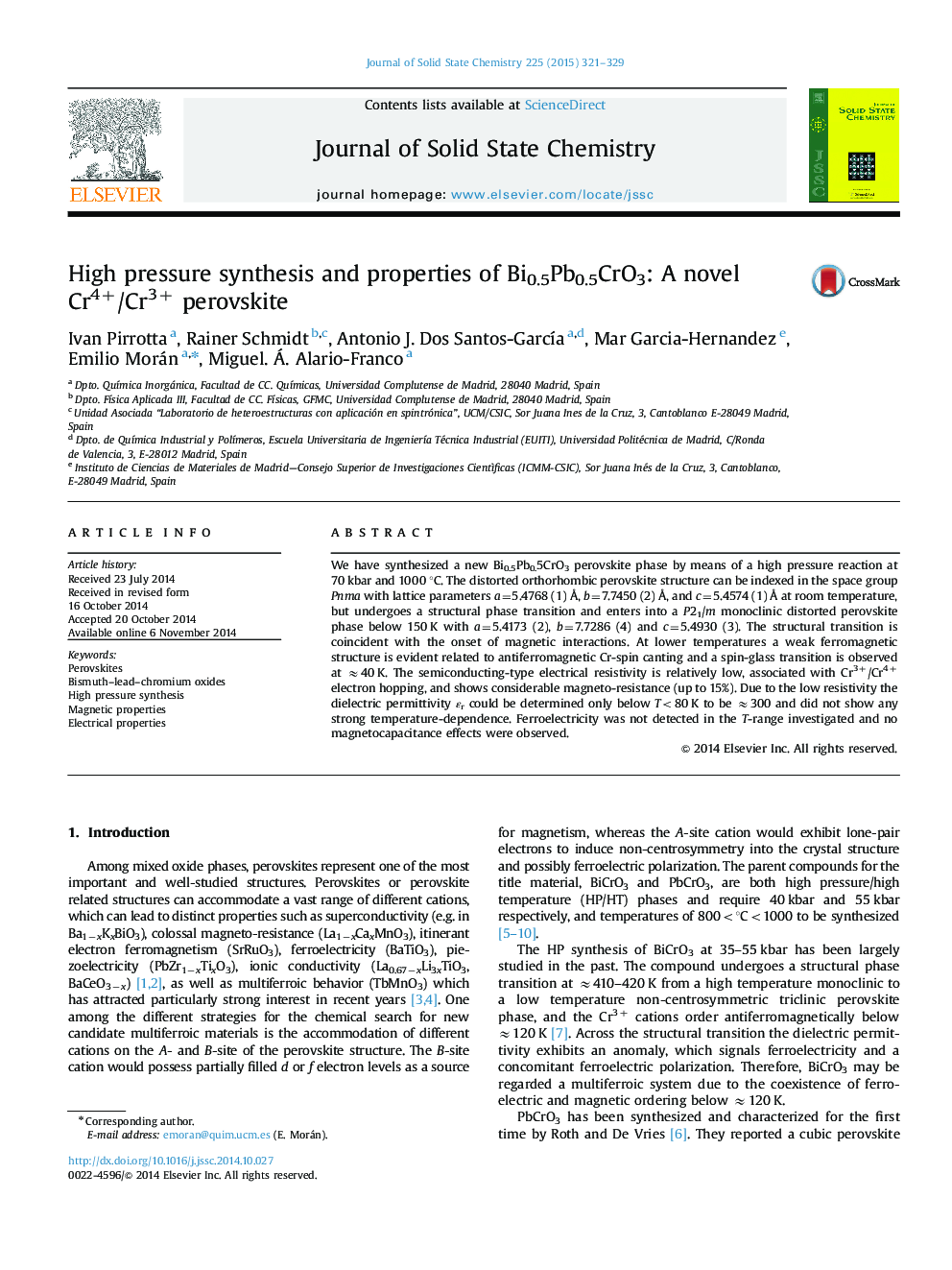| Article ID | Journal | Published Year | Pages | File Type |
|---|---|---|---|---|
| 1331636 | Journal of Solid State Chemistry | 2015 | 9 Pages |
•A new Bi0.5Pb0.5CrO3 perovskite has been synthesized under HP/HT conditions.•An orthorhombic-to monoclinic phase transition takes place at 150 K.•The structural transition is coincident with the onset of magnetic interactions.•Mott variable-range hopping charge transport and magnetoresistance are evident.
We have synthesized a new Bi0.5Pb0.5CrO3 perovskite phase by means of a high pressure reaction at 70 kbar and 1000 °C. The distorted orthorhombic perovskite structure can be indexed in the space group Pnma with lattice parameters a=5.4768 (1) Å, b=7.7450 (2) Å, and c=5.4574 (1) Å at room temperature, but undergoes a structural phase transition and enters into a P21/m monoclinic distorted perovskite phase below 150 K with a=5.4173 (2), b=7.7286 (4) and c=5.4930 (3). The structural transition is coincident with the onset of magnetic interactions. At lower temperatures a weak ferromagnetic structure is evident related to antiferromagnetic Cr-spin canting and a spin-glass transition is observed at ≈40 K. The semiconducting-type electrical resistivity is relatively low, associated with Cr3+/Cr4+ electron hopping, and shows considerable magneto-resistance (up to 15%). Due to the low resistivity the dielectric permittivity εr could be determined only below T<80 K to be ≈300 and did not show any strong temperature-dependence. Ferroelectricity was not detected in the T-range investigated and no magnetocapacitance effects were observed.
Graphical abstractA new Bi0.5Pb0.5CrO3 perovskite phase has been synthesized under high pressure (70 kbar) and high temperature (1000 °C) conditions. The room temperature structure is orthorhombic and can be indexed in the space group Pnma but below 150 K undergoes a structural phase transition and enters into a P21/m monoclinic distorted perovskite phase. The structural transition is coincident with the onset of magnetic interactions. Mott variable-range hopping charge transport and magnetoresistance effects are evident.Figure optionsDownload full-size imageDownload as PowerPoint slide
